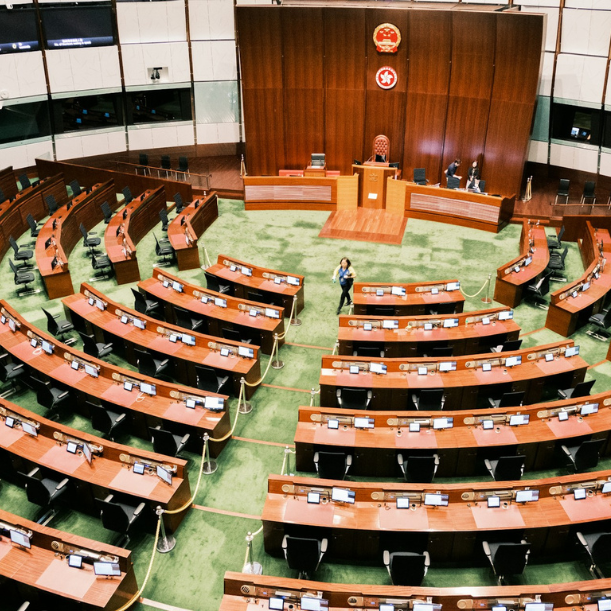The full form of HR is Human Resources. It is one of the most essential departments in any organization, responsible for managing the most valuable asset of a company—its people. The Human Resources (HR) department ensures that the right people are hired, properly trained, fairly managed, and continuously supported throughout their careers. In simple terms, HR keeps the company running smoothly by taking care of employee needs, resolving workplace issues, and building a positive, productive environment.
Whether you are:
- Looking to start a career in HR,
- Preparing for an HR interview,
- An employer defining HR job roles, or
- Simply curious about what HR does,
this blog will give you a complete understanding of the HR roles and responsibilities in an organization. Here’s what you can expect in this blog-
- What HR does to keep a company and its people aligned and productive
- The key HR roles and job descriptions you’ll find in most companies
- The day-to-day responsibilities of HR professionals across recruitment, employee management, compliance, and more
- The HR Job Description for different HR roles
- A free downloadable PDF to help you quickly recap and refer to HR roles anytime
Let’s dive in and explore the world of Human Resources in the simplest, clearest way possible!
What Are HR Roles and Responsibilities?
HR roles and responsibilities refer to the diverse tasks and duties performed by HR professionals to manage the employee lifecycle. This includes everything from attracting and hiring talent to onboarding, training, managing performance, handling payroll, ensuring legal compliance, and boosting employee engagement.
HR professionals balance operational tasks (like processing payroll) with strategic goals (like building and improving company culture). They also ensure that the organization complies with labor laws and industry standards while fostering an environment that supports employee growth and satisfaction.
Essentially, HR acts as a bridge between the organization’s management and its employees, ensuring smooth communication, fair policies, and a workplace where people can thrive.
Here are the key roles and responsibilities of HR in an organization across different functions-
- Recruitment & Staffing: Finding, interviewing, and hiring employees.
- Employee Onboarding: Integrating new hires into the company smoothly.
- Payroll & Benefits Administration: Managing salaries, leave policies, and employee benefits.
- Compliance Management: Ensuring company policies follow labor laws and regulations.
- Performance Management: Setting KPIs, conducting appraisals, and managing promotions.
- Training & Development: Organizing skill development and employee growth programs.
- Employee Empowerment and Engagement: Fostering a positive workplace culture and addressing employee grievances.
- HR Policy Implementation: Creating and enforcing HR policies and employee handbooks.
Primary Roles and Responsibilities of HR
The HR roles and responsibilities span a wide range of functions, from hiring talent to fostering a positive workplace culture. These include recruitment, employee engagement, payroll and compliance, performance management, training and development, and hr policies & culture building.
Each function is critical to ensuring employees are supported, the organization runs smoothly, and business goals are met.
Let’s dive into each area with clear, detailed explanations to help you understand the vital role HR plays.
Recruitment
Recruitment is one of the core HR roles and responsibilities, focusing on attracting, selecting, and hiring the right talent for the organization. HR professionals identify job openings, create detailed job descriptions, and post them on job boards, social media platforms (like LinkedIn or X), or company websites.
They screen resumes, conduct interviews, and collaborate with hiring managers to ensure candidates match the role’s requirements and align with the company’s culture.
Key Tasks
- Writing and posting job advertisements.
- Sourcing candidates through job fairs, referrals, or online platforms.
- Screening applications and shortlisting candidates.
- Conducting interviews and coordinating with hiring managers.
- Managing job offers and negotiating salaries.
Effective recruitment ensures the organization has skilled, motivated employees who contribute to its success. Poor hiring decisions can lead to high turnover and wasted resources, making this a critical part of HR roles and responsibilities.
Here’s an example:
An HR recruiter might work with the IT department to hire a software developer. They craft a job description highlighting required skills (e.g., proficiency in Python), post it on relevant platforms, and use applicant tracking systems to filter candidates. After interviews, they ensure the chosen candidate fits both technically and culturally.
Check out this blog on Recruitment Software, which is the complete HR technology guide.
Employee Engagement
Employee engagement is a vital HR role and responsibility that focuses on keeping employees motivated, satisfied, and connected to their work and the organization. HR professionals design employee engagement strategies and programs to boost morale, encourage collaboration, and create a sense of belonging. This includes organizing team-building activities, recognition programs, and wellness initiatives.
Key Tasks
- Conducting employee satisfaction surveys to gather feedback.
- Organizing events like team outings or appreciation days.
- Creating recognition programs, such as “Employee of the Month.”
- Promoting work-life balance through flexible policies or wellness programs.
- Addressing employee concerns to maintain a positive work environment.
Engaged employees are more productive, loyal, and less likely to leave. By fostering engagement, HR reduces turnover costs and builds a workforce that’s invested in the company’s success. This makes employee engagement a cornerstone of HR roles and responsibilities.
Here’s an example:
HR might launch a wellness program offering yoga classes or mental health resources to support employee well-being. They could also run a survey to identify areas where employees feel disconnected and address those through targeted initiatives.
Payroll and Compliance
Payroll and compliance are critical HR roles and responsibilities that ensure employees are paid accurately and on time while adhering to legal and regulatory standards.
HR manages salaries, bonuses, deductions, and benefits like health insurance or retirement plans. They also ensure the organization complies with labor laws, tax regulations, and workplace safety standards.
Key Tasks
- Processing payroll accurately and on schedule.
- Managing employee benefits, such as insurance or paid leave.
- Ensuring compliance with labor laws (e.g., minimum wage, overtime rules).
- Maintaining records for audits and reporting.
- Updating policies to reflect changes in regulations.
Accurate payroll builds trust with employees, while compliance prevents legal penalties and ensures a safe, fair workplace. These tasks are non-negotiable HR roles and responsibilities that protect both the organization and its employees.
Here’s an example:
An HR payroll specialist might resolve a discrepancy in an employee’s paycheck caused by incorrect overtime calculations. Simultaneously, a compliance officer ensures the company adheres to Occupational Safety and Health Administration (OSHA) standards during a workplace safety audit.
Performance Management
Performance management is an essential HR role and responsibility that involves setting expectations, evaluating employee performance, and providing feedback to help employees grow. HR designs systems to track progress, set goals, and conduct performance reviews, ensuring employees’ efforts align with organizational objectives.
Key Tasks
- Creating performance evaluation systems and metrics.
- Conducting regular performance reviews (e.g., quarterly or annually).
- Setting clear, measurable goals for employees.
- Providing constructive feedback and coaching.
- Addressing underperformance with improvement plans.
Performance management drives accountability and helps employees understand how their work contributes to company goals. It also identifies high performers for promotions by offering performance appraisals and areas where additional support is needed, making it a key part of HR roles and responsibilities.
Here’s an example:
HR might implement a 360-degree feedback system where employees receive input from peers, managers, and subordinates. They could also set SMART (Specific, Measurable, Achievable, Relevant, Time-bound) goals for a sales team to boost performance.
Training and Development
Training and development are crucial HR roles and responsibilities focused on enhancing employees’ skills and preparing them for future roles. HR does a complete training needs analysis, identifies skill gaps, organizes training programs, and supports career growth through workshops, certifications, or mentorship programs.
Key Tasks
- Assessing training needs through employee feedback or performance reviews.
- Designing and delivering training programs (e.g., leadership or technical skills).
- Coordinating external training or e-learning platforms.
- Tracking employee progress and evaluating training effectiveness.
- Supporting career development through succession planning.
Continuous learning keeps employees competitive and adaptable, which benefits both the individual and the organization. By investing in development, HR ensures a skilled workforce, making this a vital HR role and responsibility.
Here’s an example:
HR might arrange a coding bootcamp for employees in the IT department to learn a new programming language. They could also create a leadership development program to prepare high-potential employees for management roles.
HR Policies & Culture Building
Creating HR policies and building a positive company culture are foundational HR roles and responsibilities. HR develops policies on attendance, leave, diversity, and workplace behavior to ensure fairness and consistency.
They also promote the organization’s values through initiatives that foster inclusivity, collaboration, and a sense of purpose.
Key Tasks
- Drafting and updating workplace policies (e.g., anti-harassment, remote work).
- Communicating policies to employees and ensuring compliance.
- Organizing diversity and inclusion initiatives.
- Hosting events to reinforce company values (e.g., town halls, cultural celebrations).
- Monitoring and improving workplace culture through feedback.
Clear policies create a fair and structured workplace, while a strong culture attracts and retains talent. These efforts shape the employee experience, making them critical HR roles and responsibilities.
Here’s an example:
HR might introduce a flexible work policy to support work-life balance. They could also organize a diversity workshop to promote inclusivity, ensuring all employees feel valued and respected.
The HR roles and responsibilities across these functions work together to create a thriving workplace. Recruitment brings in the right talent, engagement keeps them motivated, payroll and compliance ensure fairness and legality, performance management drives growth, training builds skills, and policies foster a strong culture. Together, these efforts align employee contributions with organizational goals, creating a win-win for both.
HR Responsibilities Across Different HR Roles
Human Resources (HR) is a dynamic field with diverse roles and each HR role plays a unique part in managing people and driving organizational success.
Below, we dive into the HR roles and responsibilities of seven key positions: HR executive, HR recruiter, HR generalist, HR Business Partner (HRBP), HR manager, HR admin, and HR operations.
Each section explains the role, its core tasks, why it matters, and includes a practical example to bring the responsibilities to life.
HR Executive
An HR Executive is usually an entry-to-mid-level professional who handles the day-to-day tasks related to employee management. They support senior HR leaders by coordinating activities like maintaining employee records, assisting in recruitment processes, updating HR databases, and supporting HR policies across the organization.
Key Responsibilities:
- Assist in recruitment, onboarding, and training
- Maintain employee records and HR documentation
- Support employee engagement initiatives
- Handle queries related to HR policies and benefits
HR Recruiter
An HR Recruiter focuses specifically on attracting, sourcing, and hiring the best talent for the organization. They manage the full recruitment cycle—from identifying staffing needs to onboarding new employees.
Key Responsibilities:
- Post job openings on various platforms
- Screen and shortlist candidates
- Coordinate interviews with hiring managers
- Manage offer letters and onboarding processes
HR Generalist
An HR Generalist is a multi-skilled HR professional who handles a wide range of responsibilities across recruitment, employee relations, training, performance management, and compliance.
Key Responsibilities:
- Manage the entire employee lifecycle
- Handle payroll and employee benefits
- Resolve employee grievances
- Ensure HR policy compliance
HRBP (Human Resource Business Partner)
An HR Business Partner (HRBP) works closely with business leaders and acts as a strategic advisor. They align HR strategies with business goals and help improve workforce performance.
Key Responsibilities:
- Partner with leadership to drive HR initiatives
- Lead organizational development efforts
- Provide solutions on talent management and succession planning
- Support business growth through strategic HR practices
HR Manager
An HR Manager oversees the entire HR department and is responsible for leading the HR team, developing policies, and ensuring smooth HR operations.
Key Responsibilities:
- Lead recruitment, training, and development efforts
- Design and implement HR policies
- Monitor employee performance and engagement
- Ensure legal and regulatory HR compliance
HR Admin
An HR Admin (Human Resources Administrator) focuses on administrative and clerical tasks that support HR processes, including documentation, attendance tracking, and file management.
Key Responsibilities:
- Maintain HR records, files, and databases
- Support payroll processing and leave management
- Prepare HR reports and correspondence
- Provide general administrative support to the HR team
HR Operations
HR Operations professionals are responsible for building and maintaining efficient HR systems, processes, and technologies. They focus on optimizing HR workflows to ensure smooth daily operations.
Key Responsibilities:
- Manage HR software and systems
- Handle payroll, employee benefits, and HR analytics
- Streamline HR processes and reporting
- Ensure accurate data management and compliance
Summary Table: Types of HR Roles
| HR Role | Primary Focus |
| HR Executive | Day-to-day HR tasks and employee support |
| HR Recruiter | Talent sourcing and recruitment |
| HR Generalist | All-round HR management |
| HRBP | Strategic HR alignment with business |
| HR Manager | Leading the HR department |
| HR Admin | Administrative and clerical support |
| HR Operations | Process efficiency and HR systems |
HR Job Description
An HR Job Description is a formal document that outlines the key duties, responsibilities, required skills, qualifications, and expectations for a specific HR role. It helps both employers and candidates understand what is required in the job and sets clear performance standards.
A well-written HR job description:
- Attracts the right candidates.
- Defines the scope of work.
- Clarifies reporting structures.
- Ensures alignment between HR and business objectives.
How to Draft an HR Job Description
Here’s a simple structure to follow:
- Job Title: Clearly mention the position (e.g., HR Executive, HR Manager).
- Department: Human Resources
- Reporting To: Mention the supervisor/manager (e.g., HR Manager, Business Head).
- Job Purpose (1-2 lines): Briefly explain why the role exists and its core objective.
- Key Responsibilities: List 5-8 core tasks for the role using bullet points.
- Required Skills and Qualifications: Mention educational qualifications, certifications, and required soft/hard skills.
- Preferred Experience: Example: 1-3 years of experience in HR operations or a related role.
- Key Performance Indicators (KPIs): Example: Recruitment turnaround time, payroll accuracy, employee satisfaction score.
Sample HR Job Descriptions
HR Executive – Sample Job Description
Job Title: HR Executive
Department: Human Resources
Reporting To: HR Manager
Job Purpose:
To support day-to-day HR operations, employee record management, recruitment assistance, and employee engagement activities.
Key Responsibilities:
- Assist in sourcing candidates and coordinating interviews.
- Maintain employee records and HR databases.
- Coordinate onboarding activities for new hires.
- Support payroll processing and attendance tracking.
- Help organize employee engagement initiatives.
Required Skills and Qualifications:
- Bachelor’s degree in Human Resources or Business Administration.
- Strong organizational and communication skills.
- Familiarity with HR software (HRIS).
HR Manager – Sample Job Description
Job Title: HR Manager
Department: Human Resources
Reporting To: Business Head
Job Purpose:
To lead the HR department and manage all HR functions including recruitment, performance management, compliance, employee engagement, and policy implementation.
Key Responsibilities:
- Design and implement HR policies and procedures.
- Lead talent acquisition and workforce planning.
- Manage employee performance appraisals and training programs.
- Oversee payroll, benefits, and compliance processes.
- Handle employee relations and grievance redressal.
Required Skills and Qualifications:
- MBA/PGDM in Human Resources Management.
- 5+ years of HR leadership experience.
- Strong knowledge of labor laws and HR best practices.
- Excellent leadership and conflict resolution skills.
HR Recruiter – Sample Job Description
Job Title: HR Recruiter
Department: Human Resources
Reporting To: HR Manager
Job Purpose:
To manage end-to-end recruitment processes and source the best talent for the organization.
Key Responsibilities:
- Develop job descriptions and post vacancies.
- Source and screen potential candidates.
- Schedule and coordinate interviews with hiring managers.
- Manage offer rollouts and onboarding processes.
Required Skills and Qualifications:
- Bachelor’s degree in HR or related field.
- Strong networking and communication skills.
- Experience with applicant tracking systems (ATS).
Discover our Job Description category to find out more about to explore various job description templates and roles and responsibilities of popular careers in 2025.
Download Free PDF on HR Roles and Responsibilities
Whether you’re starting a career in Human Resources, preparing for an important HR interview, drafting job descriptions, or simply looking to strengthen your HR knowledge, this HR Roles and Responsibilities PDF [2025 Edition] is the perfect resource for you.
This carefully designed, ready-to-use PDF will help you:
- Quickly prepare for HR job interviews with summarized HR roles, responsibilities, and common tasks.
- Draft accurate HR job descriptions using sample templates for positions like HR Executive, HR Recruiter, HRBP, and more.
- Understand employee management best practices for day-to-day HR tasks, performance management, and compliance.
It’s your all-in-one HR reference guide that simplifies complex HR functions and provides easy-to-follow, practical examples for each HR role.
Download the HR Roles and Responsibilities PDF Here
This PDF is designed to save you time, improve your preparation, and help you build a solid foundation in HR, whether you’re a student, job seeker, HR practitioner, or employer.
Wrapping Up
Human Resources (HR) is more than just recruitment and payroll, it is the backbone of an organization’s success. HR professionals ensure that the right people are hired, supported, and developed to drive business growth. They foster employee engagement, handle compliance, manage performance, and build an inclusive and positive work culture where people can thrive.
Whether you’re an aspiring HR professional, a job seeker, or an employer, understanding the full scope of HR roles and responsibilities helps you appreciate the value HR brings to every organization. From ensuring employee well-being to aligning HR strategies with business goals, HR is a key driver of sustainable success.
Ready to Hire HRs or Advance Your Career?
For Employers: Taggd’s AI-powered recruitment solutions streamline your hiring process, matching you with skilled accountants who align with your organization’s goals and culture. Find the perfect fit faster with our data-driven approach.
For Job Seekers: Discover 1000+ job opportunities with India’s leading companies through Taggd’s smart career platform. Join our Career Circles and get matched to roles that elevate your skills and ambitions.
Start your journey today with Taggd!








